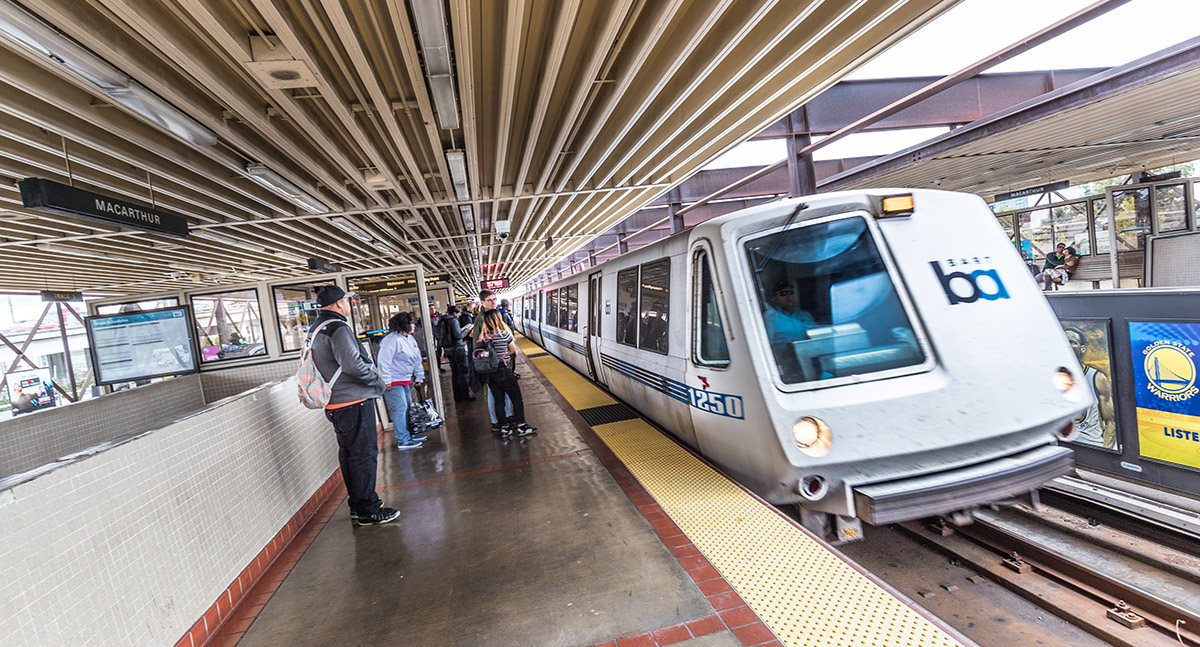Rail transit is vital to the health of a small number of U.S. cities such as New York, Chicago and Philadelphia, which are all struggling to keep their existing systems running safely and smoothly. The Bay Area’s BART needs about $10 billion in maintenance. Washington’s Metro has had numerous recent breakdowns, and users have been fleeing as a result, with ridership down 14% last year. Boston’s network was paralyzed during a snowstorm a couple of years ago and needs $7 billion in repairs.
Yet via a program called New Starts, the federal government continues to use large chunks of its precious rail funding to build dubious new lines in places where transit plays little role. We need a major rethink. Federal funding should go to maintenance on existing critical rail lines, not to building new ones.
Rail transit works best in cities with large central business districts and very high densities, like New York, where 2 million workers descend on Midtown and lower Manhattan.
“It’s much easier to convince people to pay a tax to get something new than it is to simply keep what they thought they already paid for.”
By contrast, most American cities have a far less-centralized pattern of employment. They grew up around the automobile, and so are polycentric, with job centers scattered throughout the region. People in cities such as Dallas and Charlotte, N.C., travel from everywhere to everywhere. This makes most cities a bad fit for point-to-point rail transit systems designed to take people downtown.
Most American cities also are far less dense than a Chicago or Boston. Dallas, which built a $5.5-billion light-rail system, has only 3,600 people per square mile in its central city vs. 18,400 in San Francisco.
If one city would seem to have been a great fit for developing a new rail transit system, it’s Los Angeles. The L.A. area is actually fairly dense by U.S. standards. It’s also a very large market with terrible traffic congestion and little prospect of adding new highways.
Yet the results of L.A.’s massive investment in rail transit have been underwhelming, perhaps because the region has such dispersed employment and travel demand. The Los Angeles Times has reported that despite $9 billion in rail projects, overall transit ridership is lower than in 1985. It fell again last year. Growth in rail ridership has been more than offset by bus ridership declines.
Transit advocates counter that not enough lines have been built, zoning needs to be changed, etc. But even if ridership grows, the future also will bring huge challenges. Look at the gigantic bills the Bay Area and Washington face to repair the rail systems they built in the 1960s and ’70s. Los Angeles too will face a multibillion-dollar tab to rebuild its lines sometime this century. This will pose a huge political challenge.
It’s much easier to convince people to pay a tax to get something new than it is to simply keep what they thought they already paid for.
If rail hasn’t moved the needle on ridership in L.A., it’s highly unlikely to do so in other cities. Unsurprisingly, about 84% of all public transit ridership growth in the country from 2004 to 2014 came from metro New York alone, despite billions in rail investments around the country.
The federal government should not be providing financial incentives for cities to build rail lines where it makes little sense. There’s a case for rail expansion, but it’s almost entirely in those cities that already have large systems, like New York. Unfortunately, the feds are poised to pour money into highly dubious projects, like the $3.3-billion Durham-Orange light-rail line in North Carolina.
Transit does deserve federal funding. Eliminating rail capital funds is not warranted. But those funds need to be redirected to critical repairs on America’s highly traveled existing rail transit systems. We need more Old Maintenance and fewer New Starts.
This piece originally appeared in the Los Angeles Times
______________________
Aaron M. Renn is a senior fellow at the Manhattan Institute and contributing editor at City Journal. Follow him on Twitter here.
This piece originally appeared in Los Angeles Times
